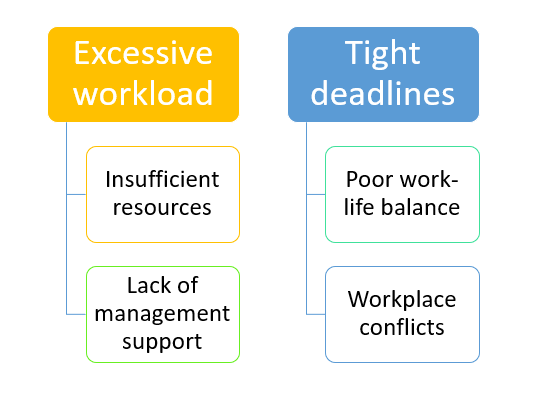Introduction:
Workplace stress may adversely affect an employee’s well-being and overall safety. Maintaining a health and safety-minded work environment requires effective stress management. Stress can lead to reduced concentration, poor decision-making, and increased accident risk.
In this article, we explore the relationship between workplace stress and safety and discuss strategies for managing stress.
Several factors can contribute to workplace safety stress, including:
- Decreased focus and attention: Having a high level of stress can make it difficult for employees to concentrate, increasing the intensity of accidents and injuries.
- Impaired decision-making: Stress can negatively affect decision-making processes, potentially resulting in unsafe practices.
- Increased risk-taking behaviour: When stressed, employees are more likely to engage in risky behaviour, putting themselves and others at risk.
- Decreased communication: Stress can lead to poor communication among employees, resulting in misunderstandings and potential safety risks.
Stress factors at work: identification and assessment:
The first step to effective stress management in the workplace is to identify the factors that contribute to employee stress.
The following are examples of workplace stressors:

Workplace Stress Management Strategies:
Several strategies can be implemented by organizations in order to manage workplace stress and improve safety in the workplace, including:
- Promote open communication: Make sure employees feel comfortable discussing stress and seeking support at work.
- Support and provide resources: Stress management training and access to assistance programs should be made available.
- Ensure Work-Life Balance: Take advantage of breaks and consider flexible work arrangements.
- Recognize and Reward Achievements: Reward hard work and safety accomplishments with incentives.
- Implement Stress-Reduction Initiatives: Team-building activities and mindfulness training should be introduced.
- Address Organizational Factors: Workload and management style should be reviewed and modified as necessary.
Why does workplace stress matter?
Workplace stress management is important to ensure employees’ welfare as well as to maintain a safe working environment.
According to Job Sage, a platform that brings insight into what matters most to job seekers, 67% of Americans indicated they were stressed at work. 54% reported anxiety due to workplace stress in 2023. As compared to 2022, when only 55% of adults were stressed, and 36% were anxious, these numbers have increased.
Conclusion:
Identifying stressors and implementing practical strategies can help organizations improve concentration, decision-making, and communication among their employees, thereby reducing accidents and errors.
The presence of a stress-free workplace promotes a safety culture and encourages a positive and productive working environment.

